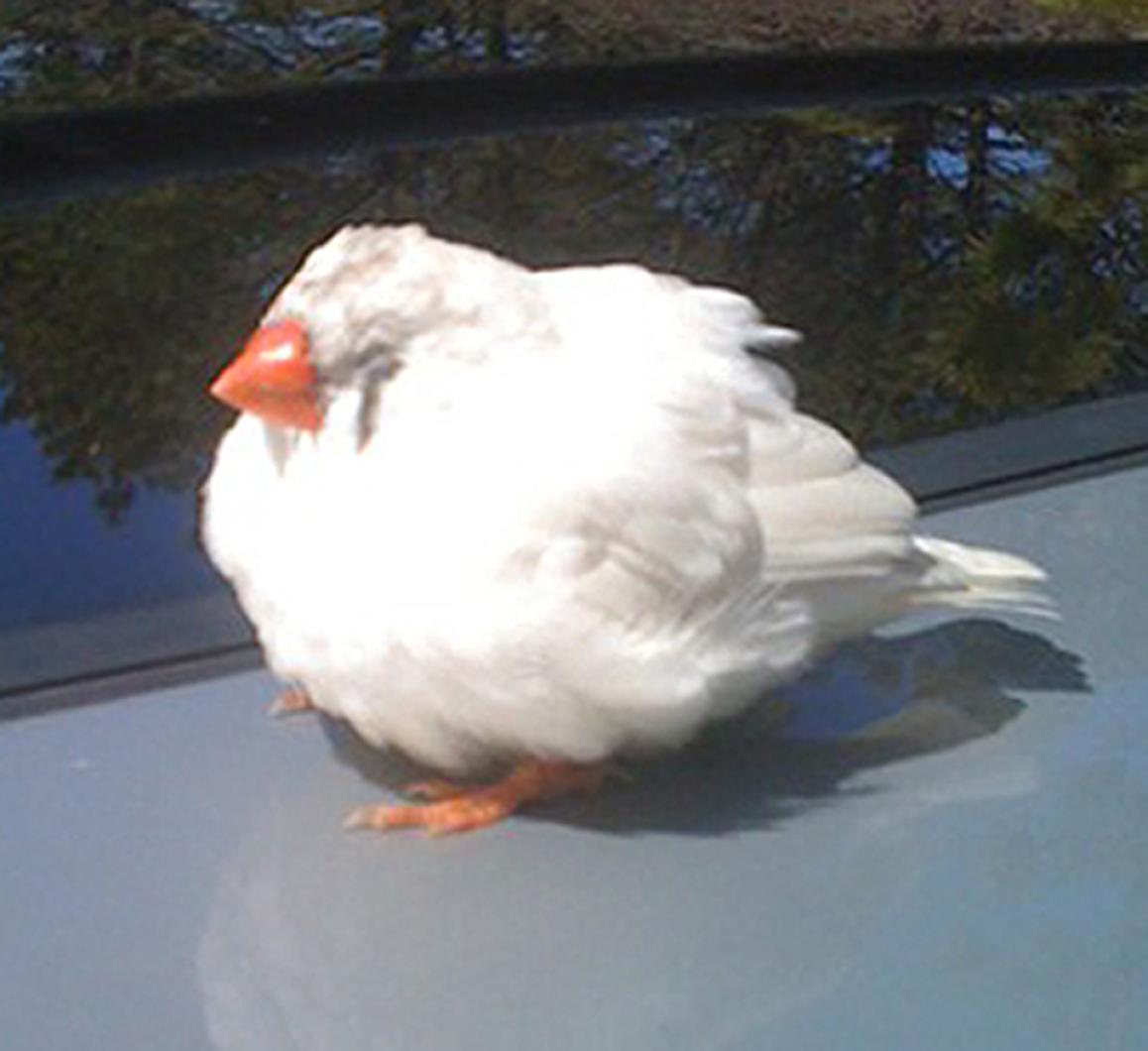I guess you could call it forensic ornithology — assembling a story or an answer by linking bits of information, like detectives solving a murder on all those TV shows I don’t watch. Anyway, birders do it a lot.
Consider a Bird Line message left by a caller named Maureen, who regularly visits the Vineyard and has been wondering about a flock of tiny birds she sees on every visit, drinking and splashing in puddles on a dirt road in Edgartown. Maureen describes the flock members as having yellow chests and being flecked with yellow. Fielding this call, I was puzzled by both the reported behavior and the description, which managed to sound like both everything and nothing.
But Maureen’s message went on to note that their Vineyard visits always occur in August, a highly relevant piece of information. That’s a flock of American goldfinches she sees, made up of drab, recently fledged young, adult females (also drab), and possibly even adult males, who would be in a deplorable state of molt and mange at that point in the season, wholly unlike their brilliant midsummer selves. This finch grows highly gregarious as the breeding season ends, and suddenly Maureen’s account makes perfect sense.
Then there’s the Case of the Stripeless Zebra. What appears to have been the same bird, a pure white finch with a heavy orange bill, has crossed my path three times now, adding up to a sad little story. First, on Wednesday, April 6, Lanny McDowell forwarded to me an e-mail string begun by Chris and Sheila Morse, in West Tisbury. They had photographed this implausible avian lounging on a car. Lanny and I surmised it was an escaped cage bird of some kind, and ornithologist Jeremiah Trimble, when sent the photos, identified it as a white variant of zebra finch.
Susie Bowman encountered the same (presumably) bird last weekend in West Tisbury. She also deemed it a zebra finch gone walkabout and tried, unsuccessfully, to catch it, since it seemed to be in distress. Even more sadly, the bird turned up once more: on Tuesday, Tom Clark e-mailed me a photo of the same bird, which had blown into Tom’s West Tisbury yard, staggered around briefly, and dropped dead. Cue the closing theme music. Forensic Ornithology is a gritty show.
More cheerfully, Philip from Felix Neck Wildlife Sanctuary called the bird line on Tuesday giddy with delight over a prothonotary warbler at the Felix Neck feeders. I’d be giddy, too: There isn’t a prettier bird on the continent, with an orange that blasts apart our dreary spring browns. Prothonotary warbler, which breeds in swamps and wetlands across the southeastern U.S., occurs here rarely but regularly, generally in spring as an “overshoot” migrant impelled by strong south winds. Normally insect-eaters, prothonotaries eat seeds when they’re hungry enough, and Philip’s feeder report furnishes a classic Vineyard record of this species.
Our nesting shorebirds are getting down to business. Piping plovers should be laying eggs any day now if they aren’t already (the first report of eggs on Cape Cod came on Tuesday), and the Island’s first clutch of oystercatcher eggs was noted last Saturday by Liz Baldwin. Migrant shorebirds are beginning to appear: The first yellowlegs I’ve heard of this season (I assume a greater yellowlegs, because lesser is an uncommon bird here, especially in spring) was seen by Susie Bowman behind Maciel Marine in Vineyard Haven, feeding on exposed flats at low tide.
More generally, spring is progressing about on schedule. Typically for the Vineyard, most mid-April reports of migrant land birds probably reflect local breeders returning rather than transients heading farther north. Walter Green of West Tisbury heard an early whippoorwill in West Tisbury last Saturday. Part of the message was garbled by the bird line gremlin, but it sounds like whippoorwills have also returned to Tom and Barbara Rivers’ house in Chilmark. It’s good to hear reports of this species, declining in numbers on the Vineyard and throughout the region.
Chipping sparrows (somewhat early this year), tree swallows, eastern phoebes, and pine warblers are all being reported with increasing frequency. Janet Sigler of Edgartown had her first towhee on Monday, and while this species is not yet numerous in the still-leafless scrub oak thickets of the state forest, a few birds have returned there and set up territories. Tom Rivers found a common yellowthroat last weekend, an unusually early sighting of this species. Tom also reports a black vulture in Chilmark on April 18. Black vulture, perhaps the same individual, has been found here repeatedly but erratically in recent years, and I’m dying to know where it goes when it’s not being seen. I feel another episode of Forensic Ornithology coming on.
Please report your bird sightings, or script ideas, to the Martha’s Vineyard Bird Hotline at 508-645-2913 or e-mail birds@mvgazette.com.




Comments
Comment policy »